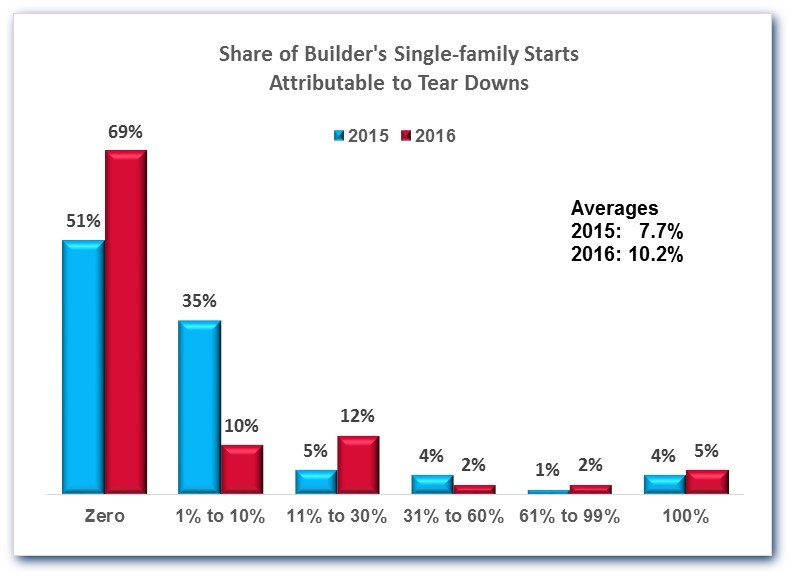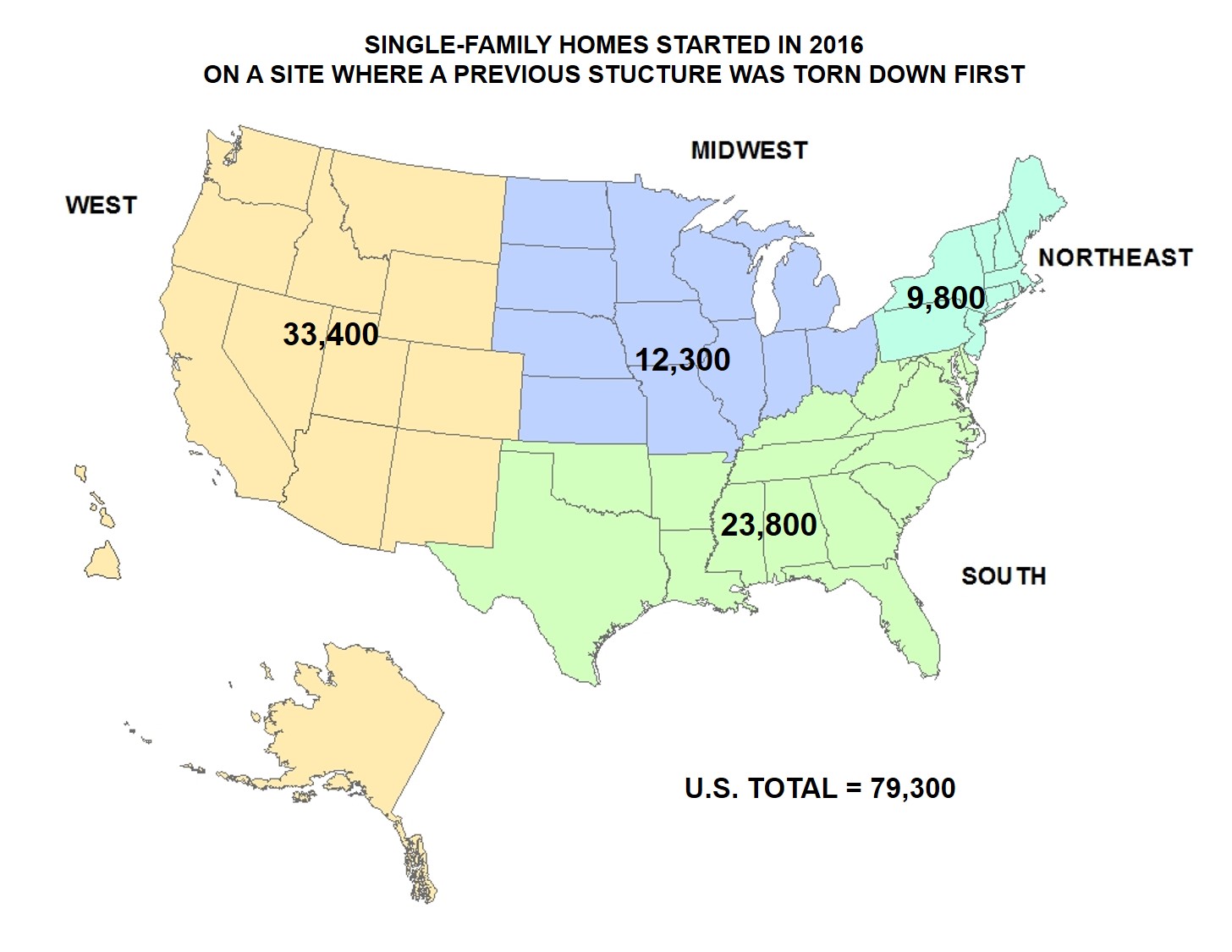In some areas, they are called "scrape-offs," but the usual term is tear-down; demolishing an existing home to build a new one in its place. Tear-downs, not to be confused with in-fill building where a house is erected on a vacant lot in a developed neighborhood, are often just a matter of replacing an aged or decaying property with a new home. But not always.
Tear-downs can be a builders' staple in desirable towns where buildable land is at a premium and housing prices are rising. There can be a tipping point where the land is worth more to a builder than the house sitting on it will bring from an owner-occupant or an investor.
The National Association of Home Builders (NAHB) just issued a report on tear-downs and estimates there were 79,300 single-family homes removed in 2016 to allow erection of a new structure. Thus tear-downs accounted for 10.2 percent of all single-family starts. The number and share jumped sharply from 2015 when there were an estimated 55,000 such starts, a 7.7 percent share.
NAHB defines a tear-down start as a home built on a site where a previous structure was present or there is evidence there was. Their data is based on reports from the new home's builder. This, they say, is the only practical way to produce an estimate; if a structure had been present on a building site recently it would usually leave some evidence that a builder can detect. To obtain the chart below, the builders' answers were weighted by the number of homes they started in 2016.

NAHB said that since the 10 percent increase in such starts from 2015 to 2016 the incidence of tear-downs has become relatively flat, "So the increase in tear-down starts in 2016 reflects the continued recovery of the single-family housing market, as well as an increase in the reported tear-down percentage."
The 79,300 single-family tear-down starts in 2016 are divided across the four principal Census regions as shown below.








